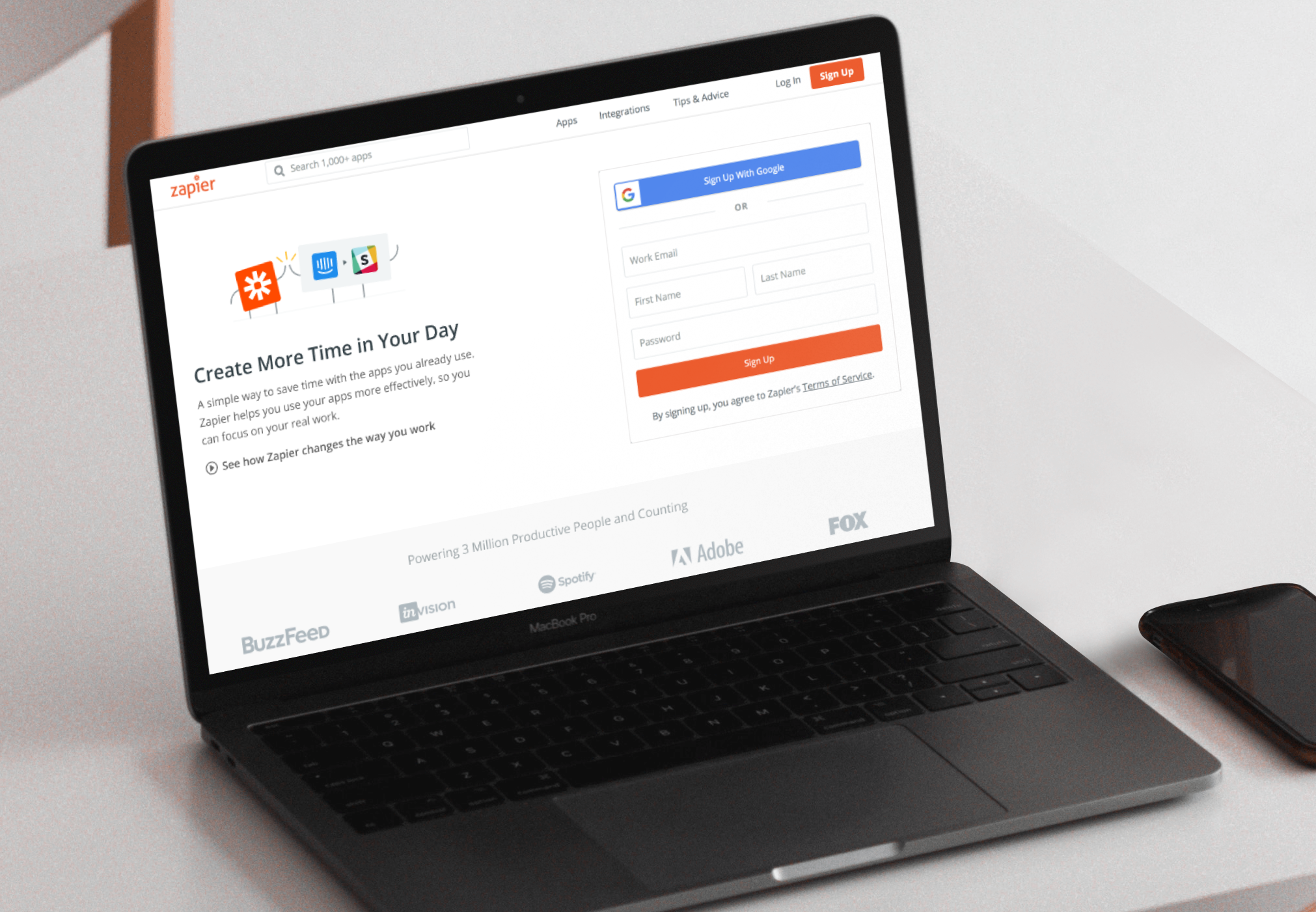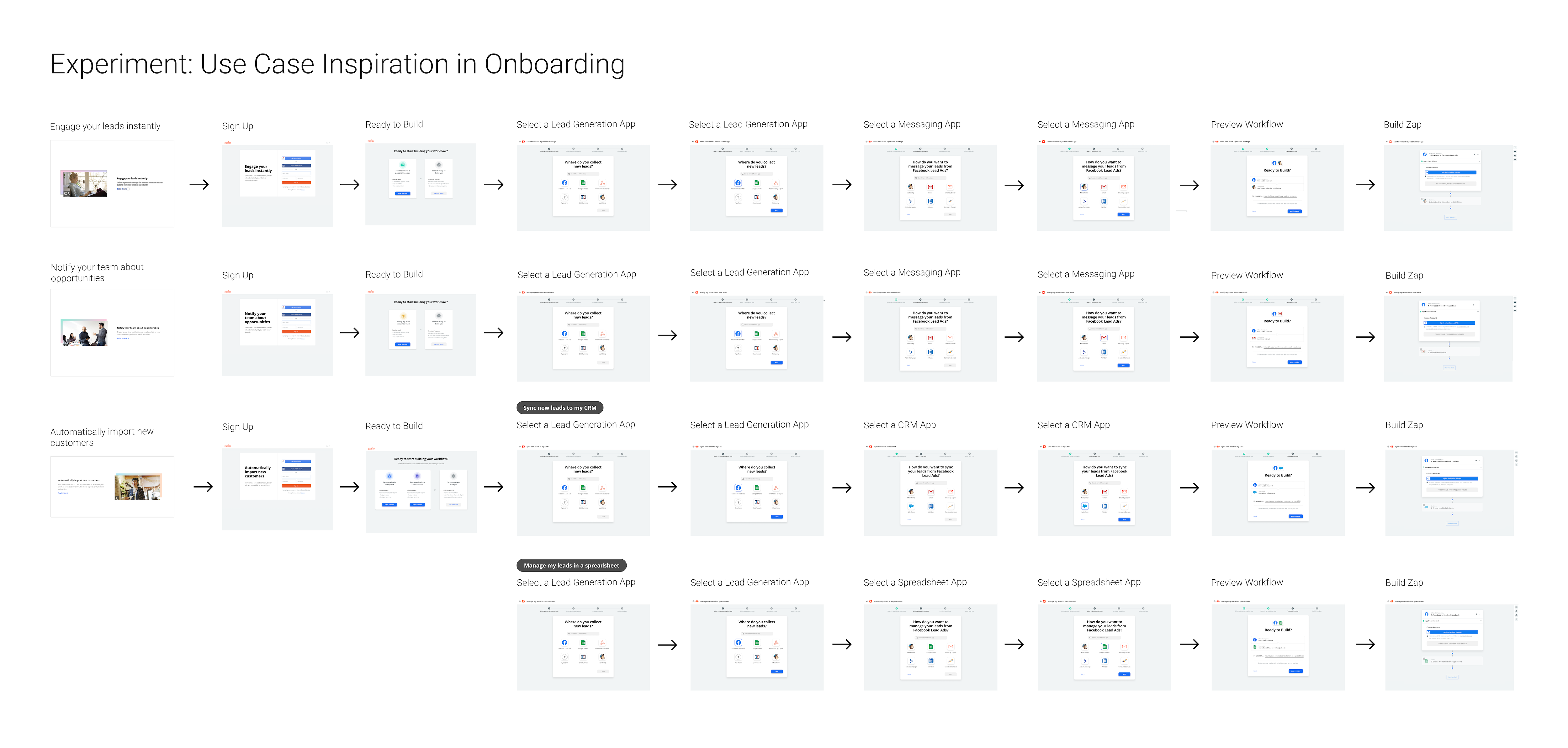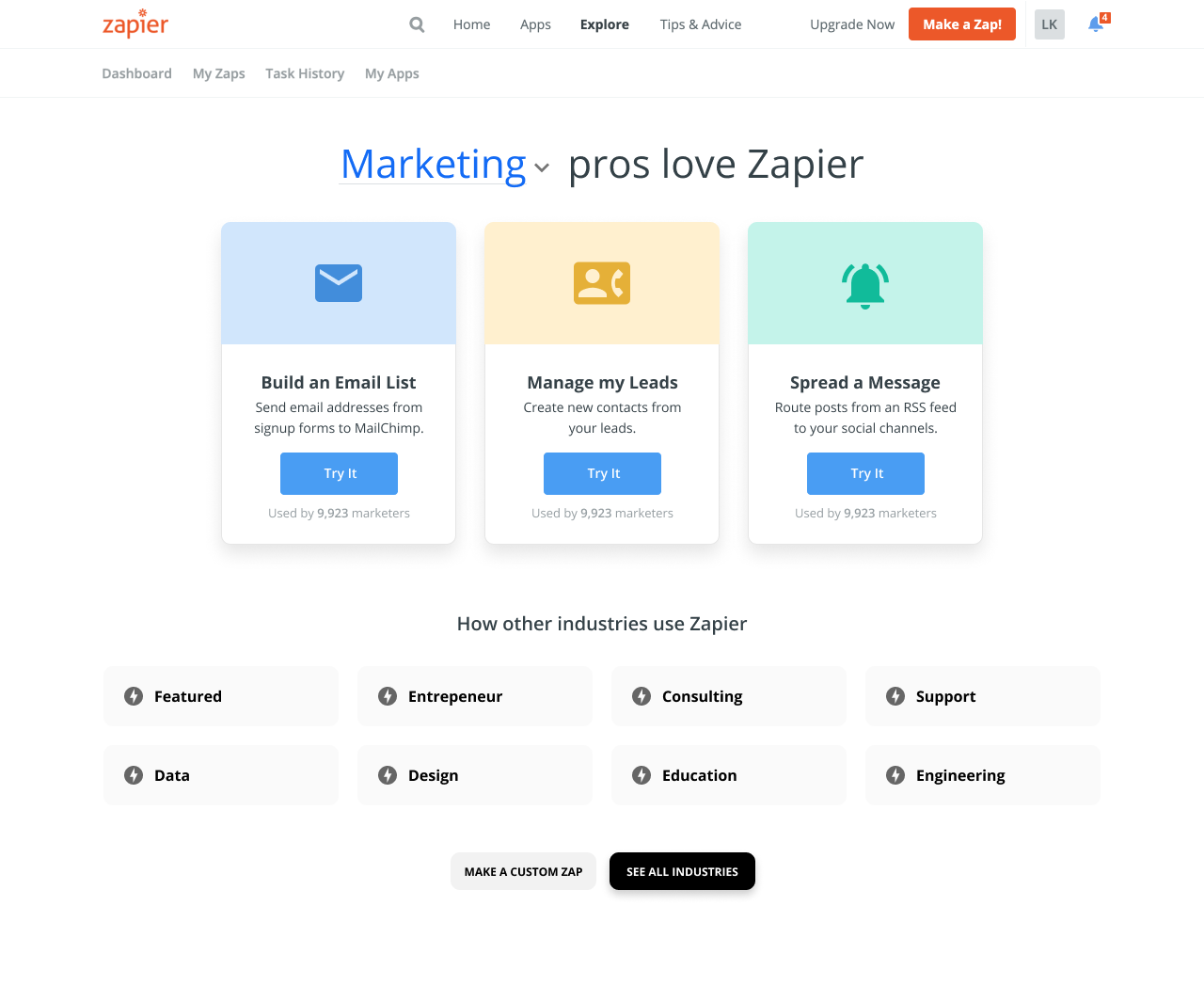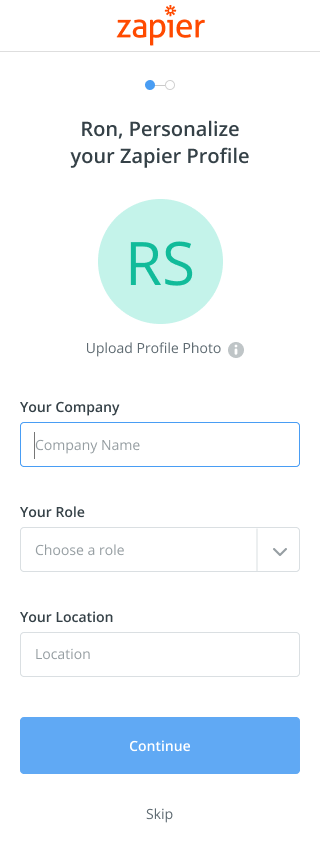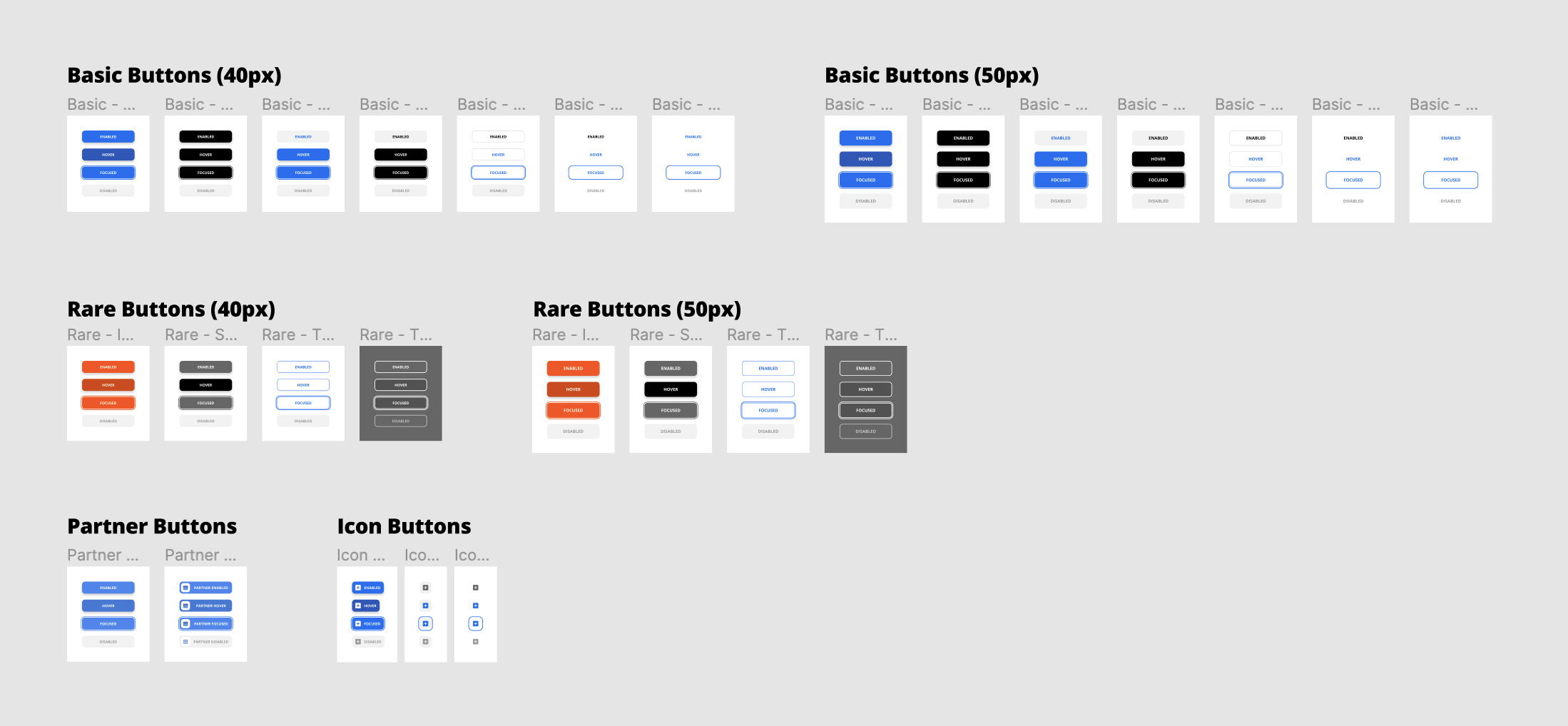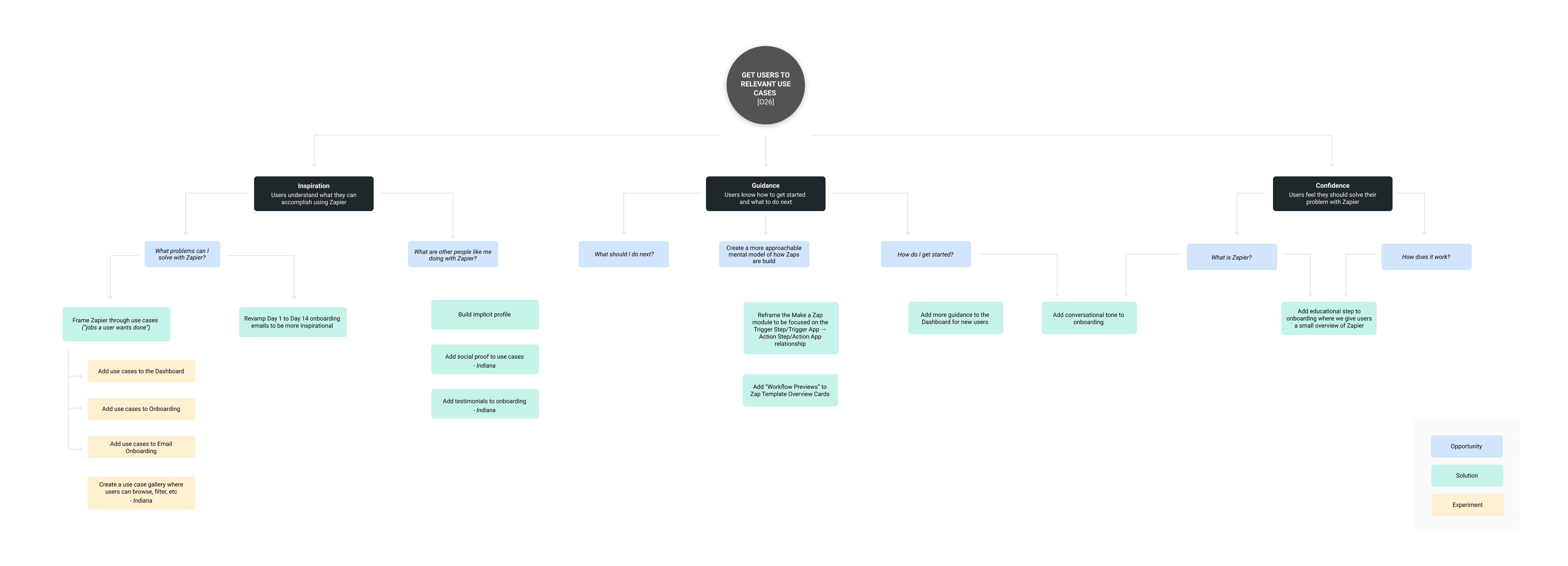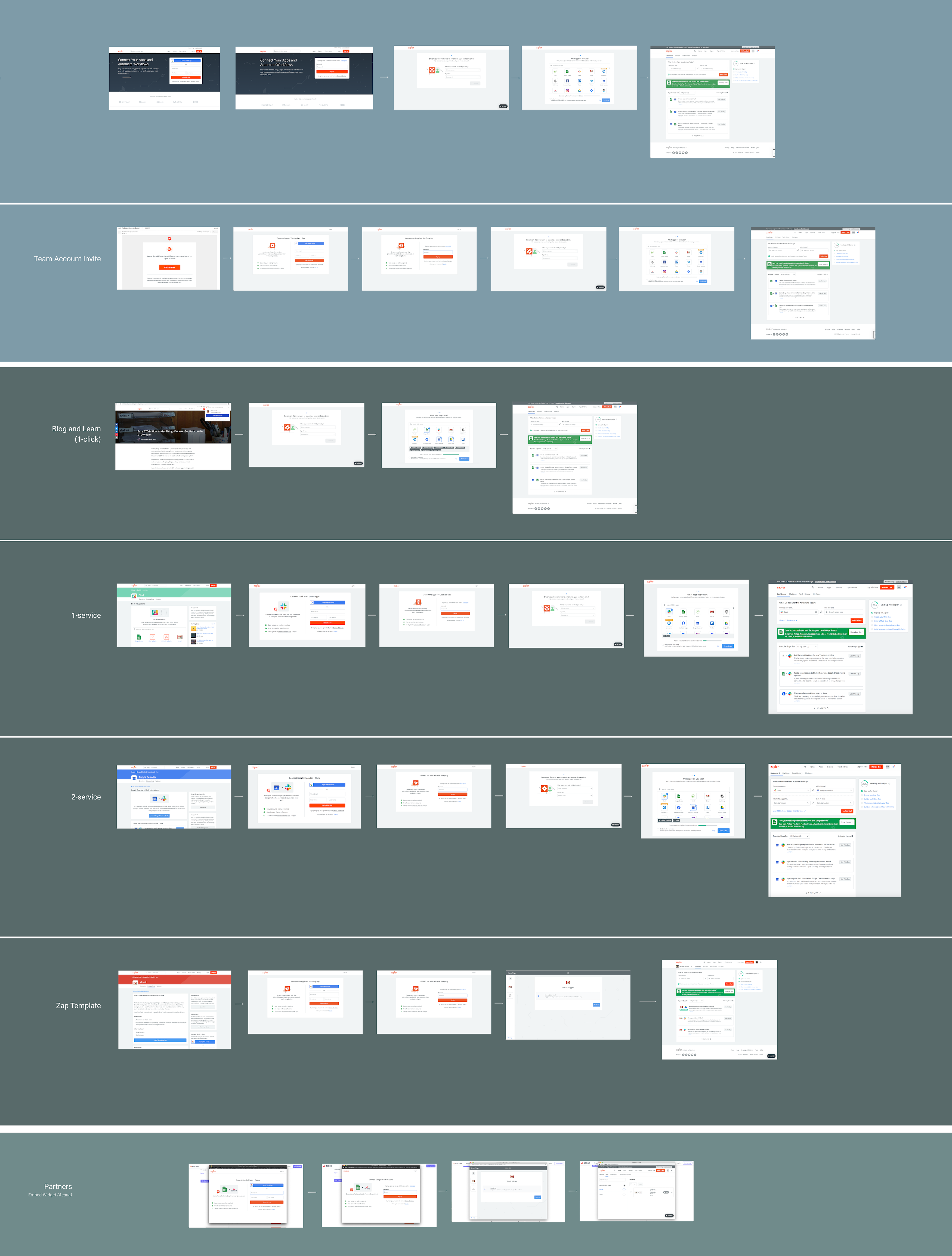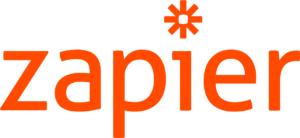
Redefining Onboarding to Drive Growth
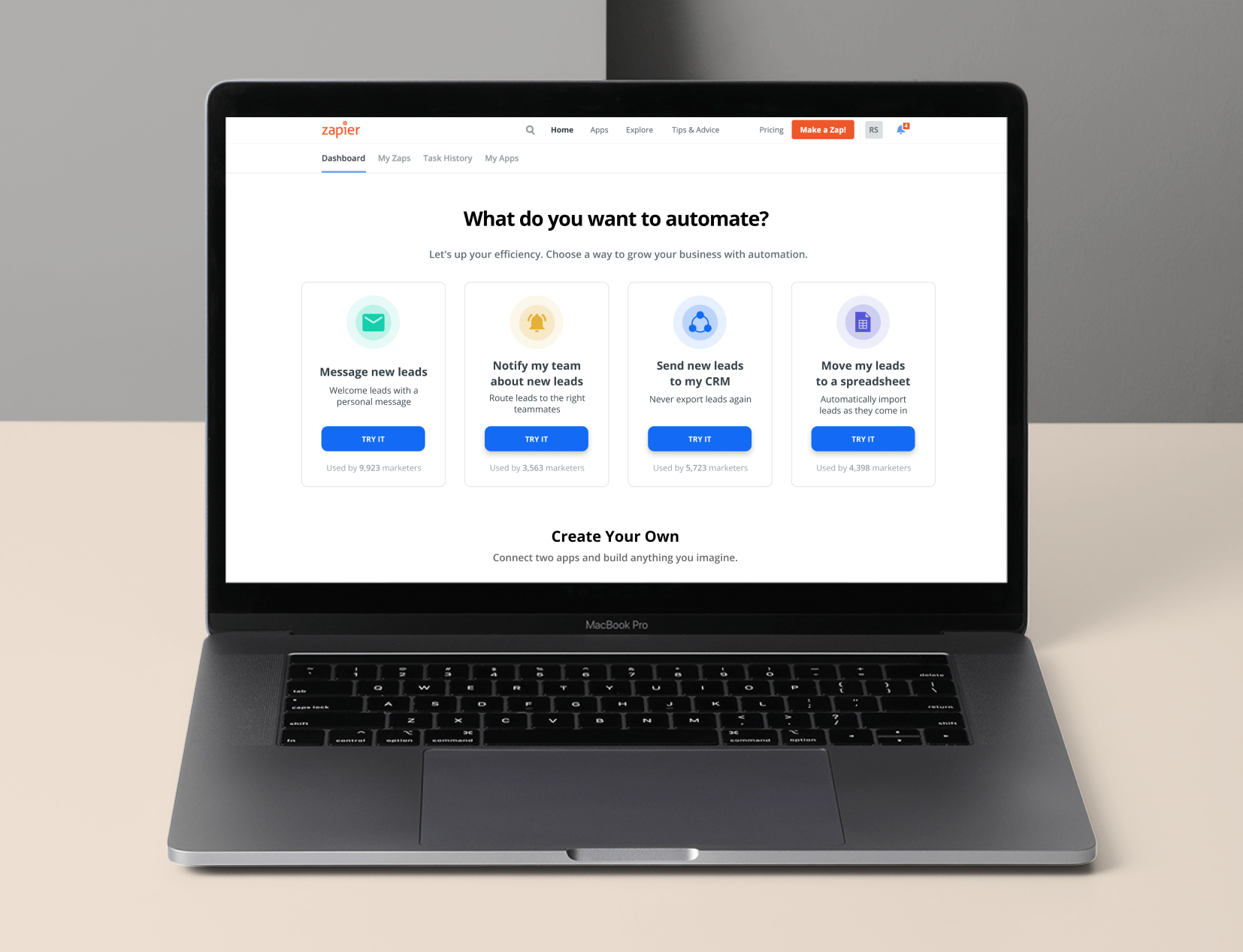
Background
Zapier is a no-code automation platform that connects thousands of apps, helping users automate workflows without developer assistance. However, onboarding new users and guiding them to create their first automation (or “Zap”) effectively was a major challenge.
My role as a Product Designer on the Activation Team was to bridge this gap—ensuring new users could quickly understand Zapier’s value, discover relevant use cases, and take meaningful first steps.
Challenges
Approach & Design Process
To tackle these challenges, we adopted a rapid experimentation and iterative design approach:
User Research & Insights
- Conducted user interviews, Jobs-to-be-Done analysis, and data analysis to identify pain points.
- Mapped the user journey to uncover drop-off points in the onboarding flow.
Rapid Prototyping & Testing
- Designed and tested multiple onboarding flows using A/B experiments.
- Developed an “Inspiration Gallery” MVP, showcasing automation examples tailored to users’ needs.
- Iterated on use-case-driven onboarding, prompting users to select their work tools upfront to deliver personalized recommendations.
Strategic Product & Business Alignment
Beyond design execution, I played a key role in product discovery and strategic decision-making.
I worked closely with product managers, engineers, and cross-functional teams to prioritize features that aligned with both user needs and business objectives.
